MUSHROOMS TOADSTOOLS AND OTHER FUNGI
Those invaluable non-green plant-like organisms live as saprophytes (on dead organic matter). They spend the great majority of their lives as microscopic, invisible threads growing through the soil and invading almost any form of dead plant or animal material, causing rotting in the process. Only when they need to produce and distribute their even more microscopic 'spores' do they form solid bodies such as these mushroom- and bracket-shaped growths: the spores are produced on the undersides from where they drop down, to be caught and carried by even the lightest of breezes. (Indeed, many types of those seed-like spores are being carried in the air, everywhere, all the time. That's why a slice of bread - completely sterile when it came out of the oven - turns mouldy so quickly. It may also explain why some folk can suffer from 'hay'-fever in the autumn and winter.)
Two online sources agree that there are something of the order of 15,000 kinds of fungi to be found in the UK. Identifying them needs a very specialist skill set, sometimes requiring microscopic or even chemical assistance. Getting it wrong can be life-threatening as there are highly poisonous as well as psychoactive types to be found amidst the harmless and the few sensibly edible ones. So no attempt is made to identify any specimens in the following paragraphs.
Like any other organism, each kind fits best in some particular ecosystem, some natural context. As far as the footpath is concerned, those found along the canal-side woodland are different from those on the horse pastures.

Woodland Fungi, October
1, several inches across, had pushed up through the material of the footpath itself. 2 and 3 were growing on dead wood.
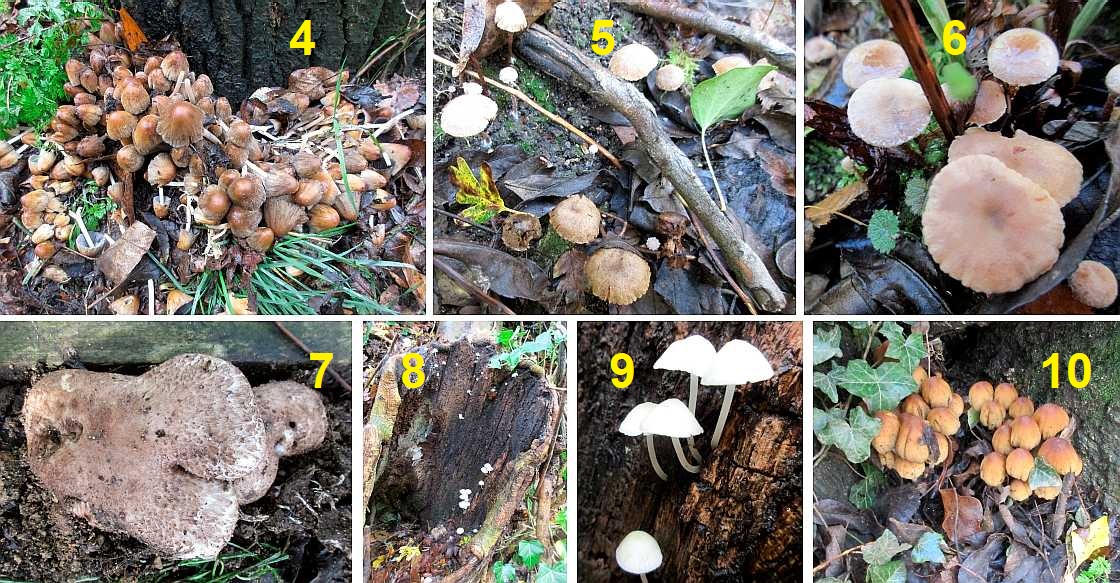
Woodland Fungi, November
4 and 10 each erupted around the base of a tree trunk. 7 may be just a different-shaped variant of 1. 8 was the burnt stump of a tree, playing host to at least two kinds of fungi: 9 is a close-up view of one of them. 5 and 6 may be one or several kinds of soil- or wood-based rotters.

Woodland Fungi, December
11 were very delicate specimens, apparently growing out of a section of moss-covered wall. 12 was another tree-base eruption: it just might have been related to the white fungus growing up the bark. 13 is the kind of tiny organism you'd notice only if you're specially on the lookout.

Pasture Fungi, September
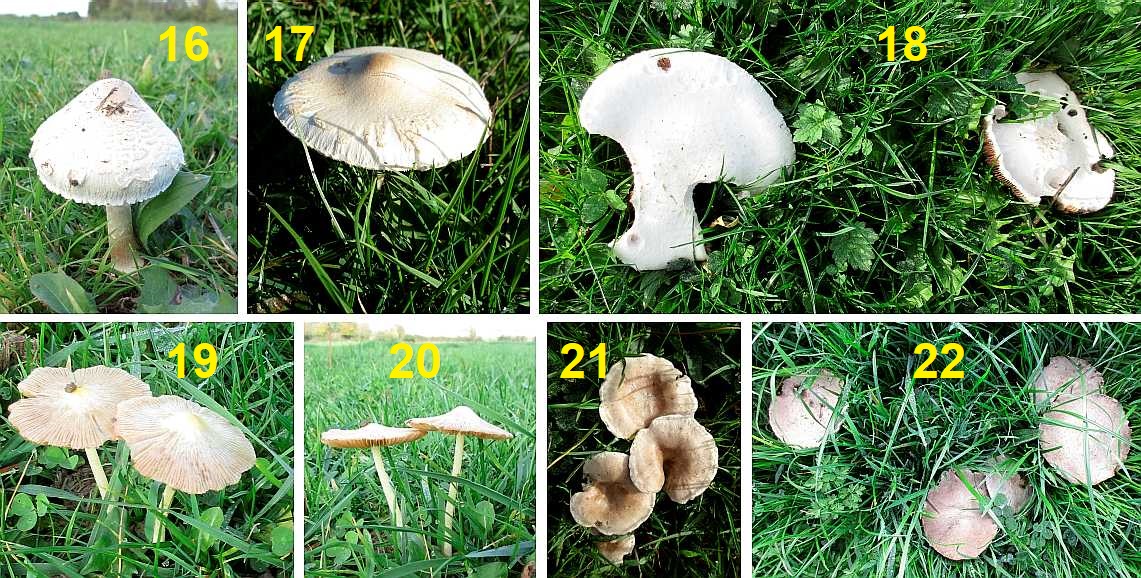
Pasture Fungi, October
Although it is certain that there were several kinds of mushrooms or toadstools here, it would need an expert to say how many. Most specimens arrive overnight. Some will be nibbled by rabbits or squirrels, snails or beetles: most will simply collapse after a few days. With 26 (below) and some other types the flesh turns to a sort of black ink which drips off the rim of the remnant.
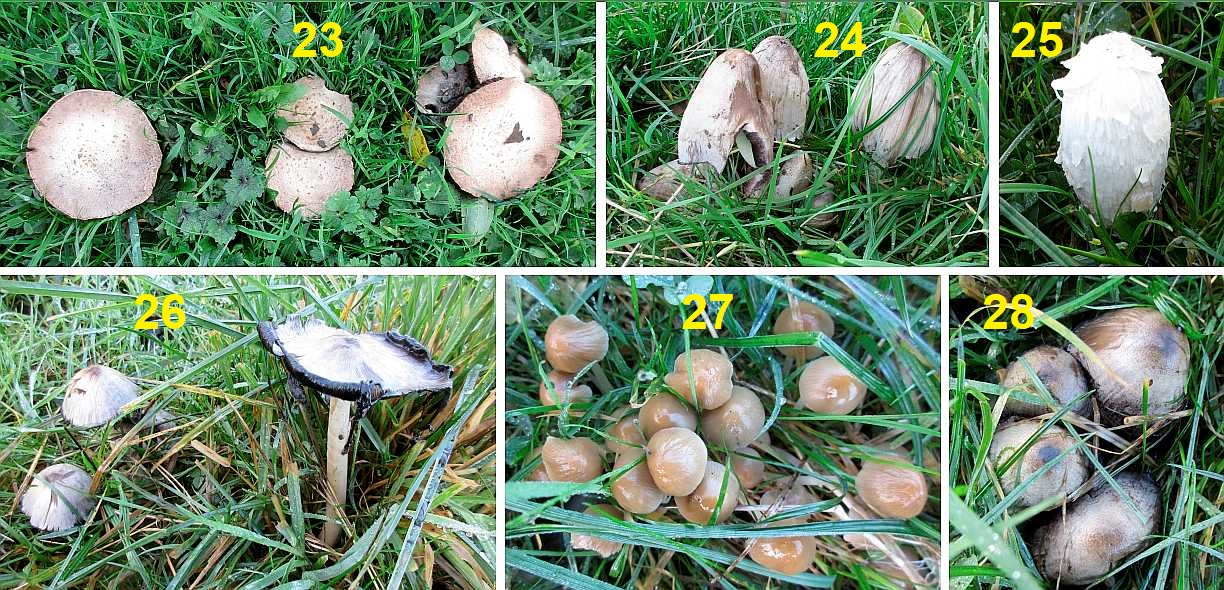
Pasture Fungi, November
 Many of these fungi, especially those in pastures, may start off as a small patch. Then it grows outwards so its next appearance on the surface is in the form of a circle. Always extending outwards, the "fairy ring" expands from year to year. Grass on the inside area may be darker from the fungus-enriched soil.
Many of these fungi, especially those in pastures, may start off as a small patch. Then it grows outwards so its next appearance on the surface is in the form of a circle. Always extending outwards, the "fairy ring" expands from year to year. Grass on the inside area may be darker from the fungus-enriched soil.
 STAG'S HORN or
STAG'S HORN or
CANDLE SNUFF FUNGUS
Xylaria hypoxylon
Easily missed as it is commonly only an inch or two tall, the black and white fungus is usually associated with decaying wood.
Photographed in late October.
 Thought to be
Thought to be
DRYAD'S SADDLE
Polyporus squamosus
This exceptionally large but short-lived (2-3 weeks) soft multi-bracket fungus appeared on a canal-side tree.
(The Polo packet was 4½", 11½ cm long.)
Photographed in July.
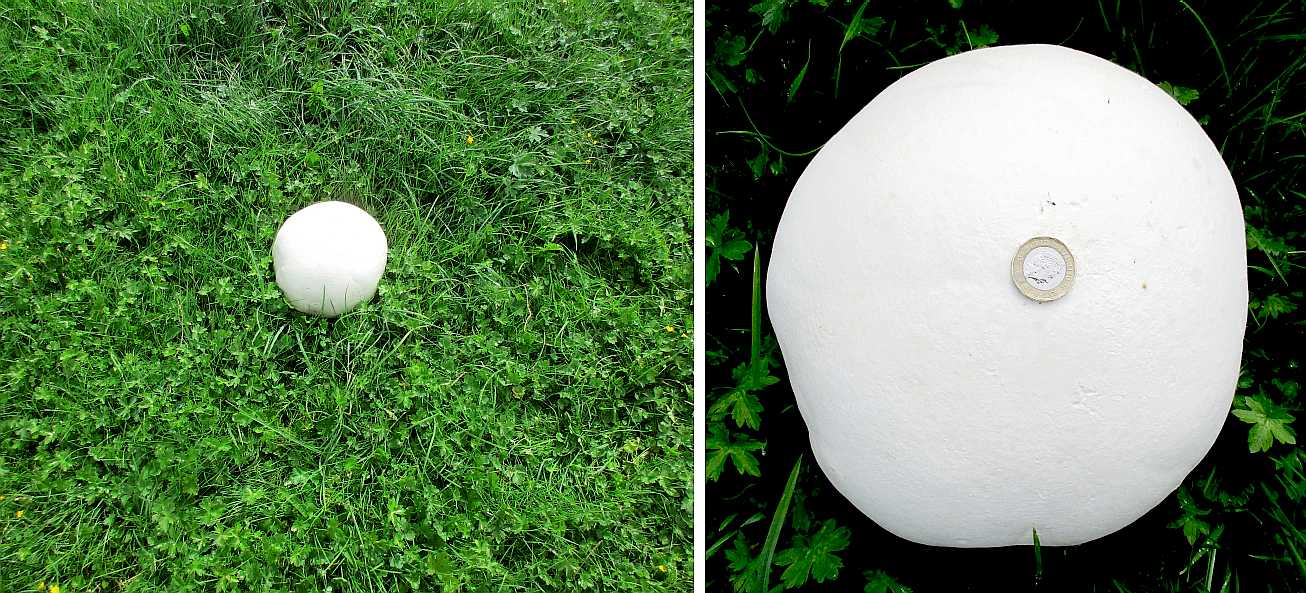 This large white solid fungus mass appeared in one of the horse pastures in late August. Clearly visible from the footpath, in close-up the pound coin (nearly an inch, 22 mm, across) indicates the scale. Unfortunately vandals reduced it to smithereens the next day so it could never develop into the mature brown, even larger, soft textured, spore-cloud emitting -
This large white solid fungus mass appeared in one of the horse pastures in late August. Clearly visible from the footpath, in close-up the pound coin (nearly an inch, 22 mm, across) indicates the scale. Unfortunately vandals reduced it to smithereens the next day so it could never develop into the mature brown, even larger, soft textured, spore-cloud emitting -
GIANT PUFFBALL
Calvatia gigantea.
ALGAE
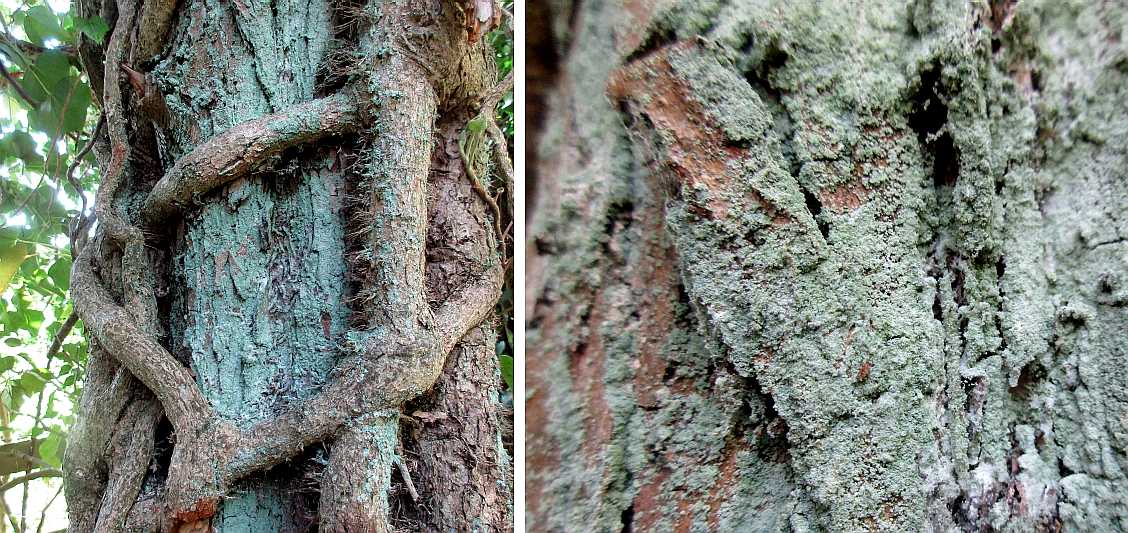
PLEUROCOCCUS
Pleurococcus species
This is not a fungus but a mass of microscoic algae (same division as seaweeds), subsisting mainly on rainwater. It produces no flowers, spreading by 'spores' instead.
Photographed in April but persisting all year.
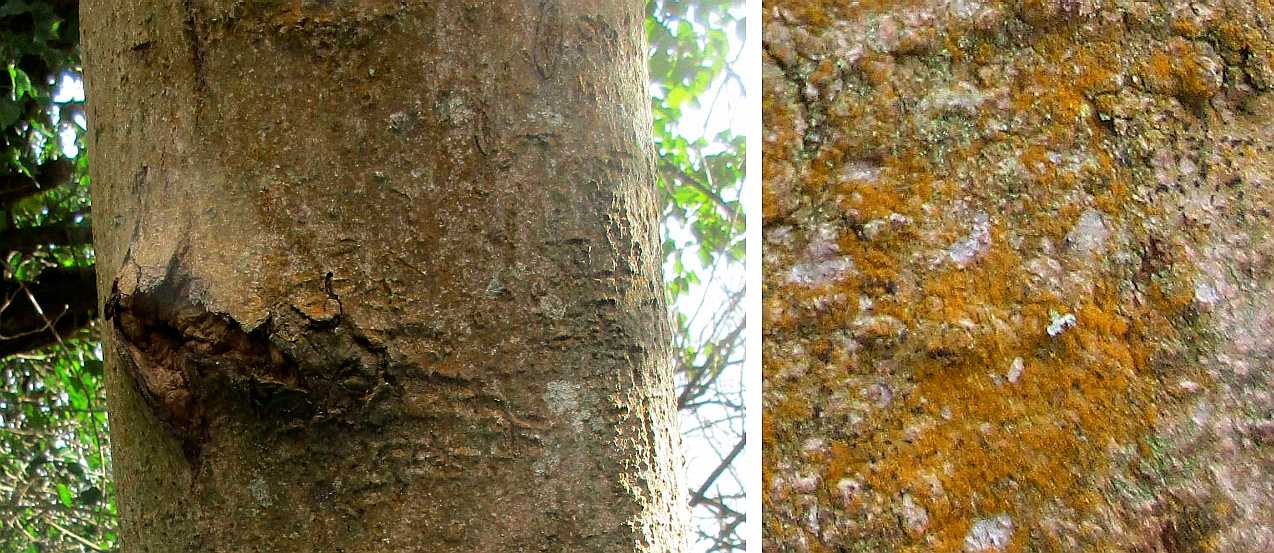
TRENTEPOHLIA
Trentepohlia aurea
Another surface-growing alga, detectable on only one or two canal-side trees. It can sometimes be quite a bright orange colour.
Present (or absent) all year round.






 Many of these fungi, especially those in pastures, may start off as a small patch. Then it grows outwards so its next appearance on the surface is in the form of a circle. Always extending outwards, the "fairy ring" expands from year to year. Grass on the inside area may be darker from the fungus-enriched soil.
Many of these fungi, especially those in pastures, may start off as a small patch. Then it grows outwards so its next appearance on the surface is in the form of a circle. Always extending outwards, the "fairy ring" expands from year to year. Grass on the inside area may be darker from the fungus-enriched soil. STAG'S HORN or
STAG'S HORN or Thought to be
Thought to be This large white solid fungus mass appeared in one of the horse pastures in late August. Clearly visible from the footpath, in close-up the pound coin (nearly an inch, 22 mm, across) indicates the scale. Unfortunately vandals reduced it to smithereens the next day so it could never develop into the mature brown, even larger, soft textured, spore-cloud emitting -
This large white solid fungus mass appeared in one of the horse pastures in late August. Clearly visible from the footpath, in close-up the pound coin (nearly an inch, 22 mm, across) indicates the scale. Unfortunately vandals reduced it to smithereens the next day so it could never develop into the mature brown, even larger, soft textured, spore-cloud emitting -
